The bond market implosion is having broader impacts, particularly on currency markets as a run to safety to the USD on Friday night saw major currencies plummet in value, taking some stock markets with them. Treasury yields actually pulled back some in the wake of a very solid US PCE report but the Australian dollar and gold were the biggest casualties, falling more than 2% while commodities were brought back into line with oil falling 1% and copper dropping nearly 4%. Wall Street was quite mixed with the headline Dow almost off by 2% while the NASDAQ was up 0.5% as European stocks sold off across the board, which will be the likely outcome on the open here in Asia on Monday morning.
Bitcoin volatility has reduced somewhat but its all downside for the moment with another drop back to the start of week session lows at the $45K level on Friday night, setting up for a major breakdown this week (or weekend) if confidence is blown over:
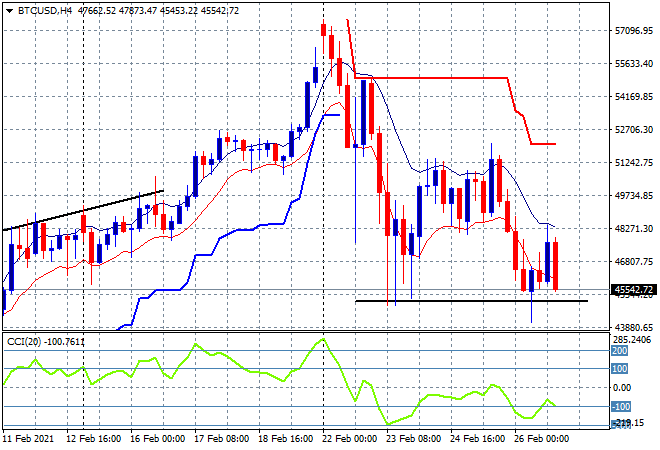
Looking at share markets in Asia from Friday’s session where the Shanghai Composite fell over 2% closing at 3519 points while the Hang Seng Index was slammed, eventually closing 3.6% lower at 28980 points. The classic blowoff topping action on the daily chart has fully come to fruition as the inability for price to remain anchored at the 30000 point level could see it continue below and return to the late January lows at 28000 points, or lower
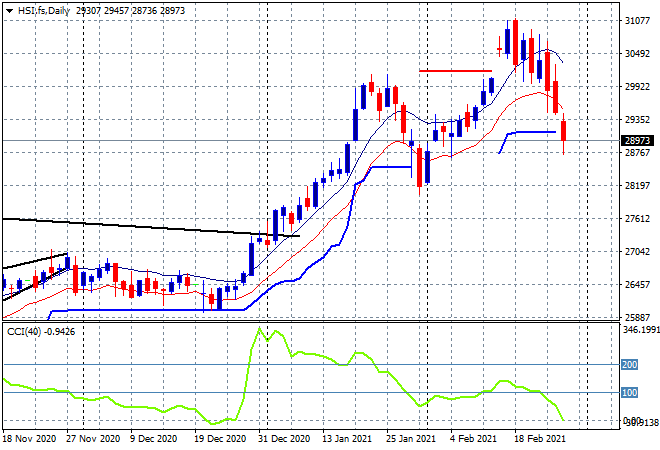
Japanese markets were the worst hit by the bond rout, with the Nikkei 225 wiping out nearly 4% as it closes the week out at 28966 points. Futures are also pointing to a small fill of that loss to start this trading week, as price wants to bounce off trailing ATR daily support at 29000 point but there is still the possibility of overshooting and getting back to the more sustainable trend line down nearer 28000 points:
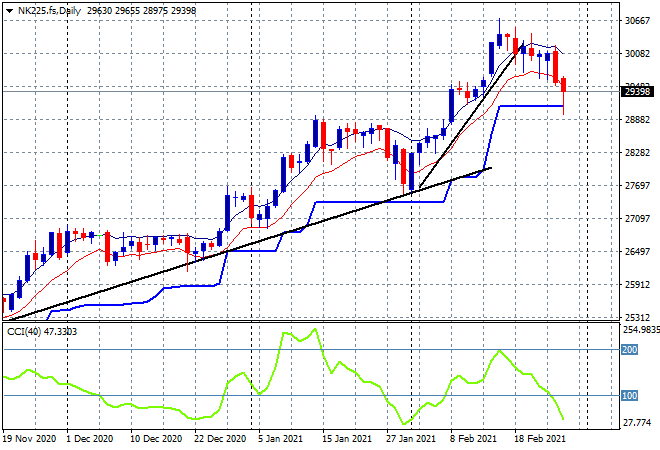
The ASX200 was the best market in the region, relatively speaking, only down 2.3% to close at 6673 points, now wiping out all its gains for February. SPI futures are up nearly 30 points in response to the minor recovery in the last few hours of action on Wall Street, and possibly the much lower Aussie dollar could help ease concerns starting the week. However, daily momentum and price action is all pointing to more downside or stability at best here:
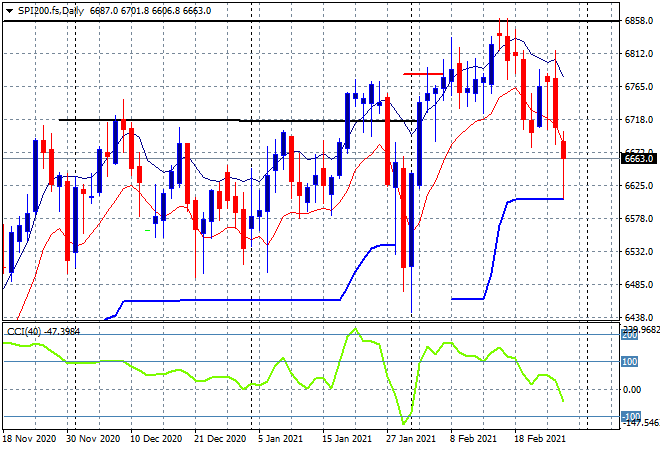
European markets were in unison, with selloffs across the continent although the FTSE took most of the hit, down over 2% while the German DAX moved 0.7% lower to 13786 point. With price failing to all year so far to breakout above the former highs (solid black upper horizontal line on the daily chart below) this decline is not surprising, as momentum inverted on the daily chart beforehand. I’m watching for ATR support at the 13500 point level that must hold for the longer term rally to continue:
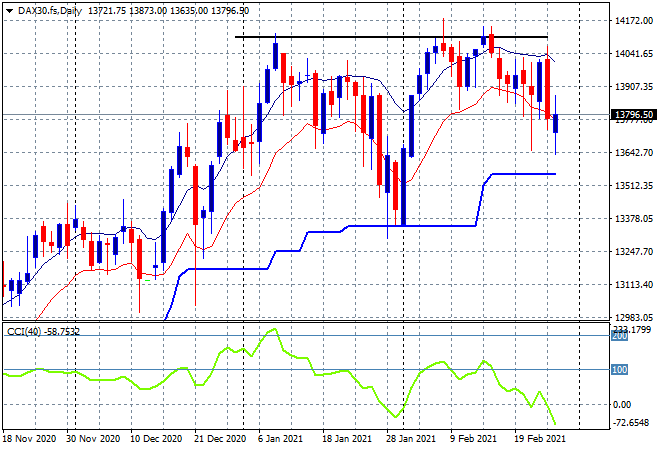
Wall Street could not just wave away the chaos in bond markets as another volatility blip as even the hand holding by the Fed couldn’t help it out of the hole, although there was some filling in later in the session. The S&P500 finished 0.5% lower at 3811 points with the daily chart showing price sitting right on trailing ATR support and now taking out all of this year’s nominal gains. Price really must hold here or we could see a quick return to the pre-Christmas lows at the 3670 point level:
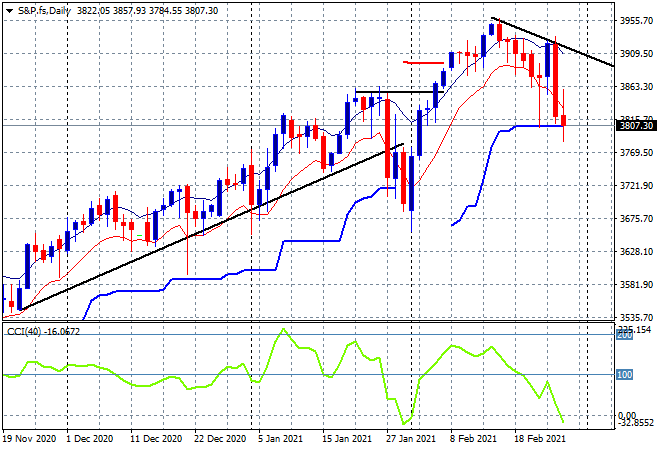
Currency markets were even more volatile with King Dollar exacting many tributes against the majors, with big flops all round on a run against anything else. Euro had previously spiked up through the 1.22 handle mid week, but this was a huge false breakout with a big smash down below the 1.21 level and then some, almost making a new weekly low in the process. Relatively speaking these moves aren’t that big, but volatility intra-week is increasing and that’s concerning:
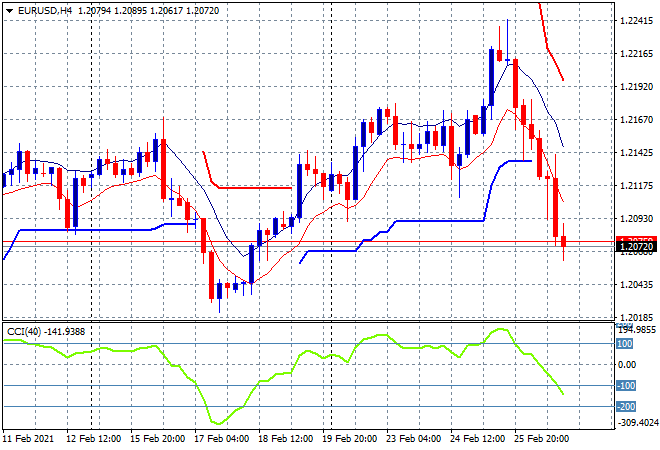
The USDJPY pair was again relatively stable and was able to put on a little more upside, not surprising given the run back to USD, with a finish just above the mid 106 level and a new weekly high. The next target here is the 108 handle which equates to the mid 2020 high before the near year long trend down:
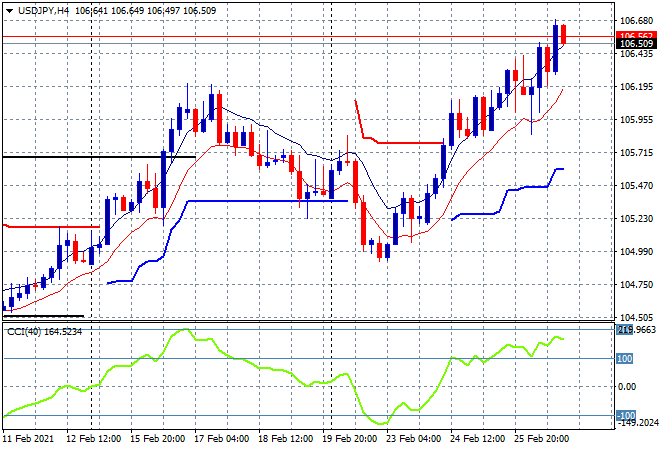
The Australian dollar was the biggest loser with some epic volatility (and profit!) as it took a peakaboo above the 80 handle on Thursday, then slammed on each four hourly session through to the close on Friday night/Saturday morning, finishing right on the 77 handle – or a 300 pip move! Is there more downside? It’s hugely oversold, but watch commodity prices for any signs of a sustained pullback:
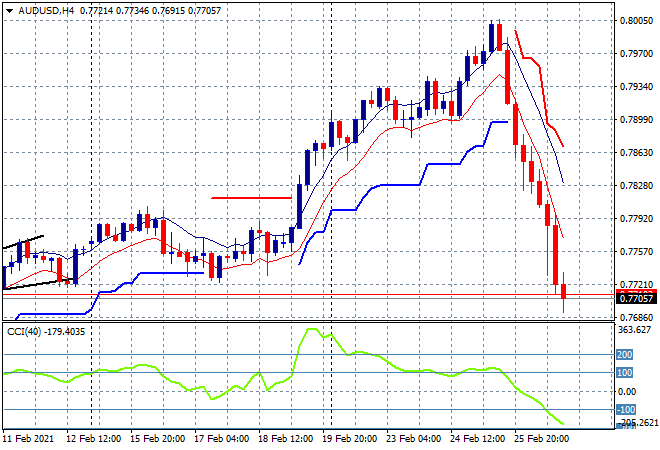
Oil prices were hit slightly on the stronger USD meme, with Brent crude slipping around 1% to finish the week below the $65USD per barrel level. Another wobble in the uptrend towards the main target at the $70USD per barrel at the 2019 highs, but watch that low moving average on the daily chart plus momentum, which needs to not invert below the nicely overbought status:
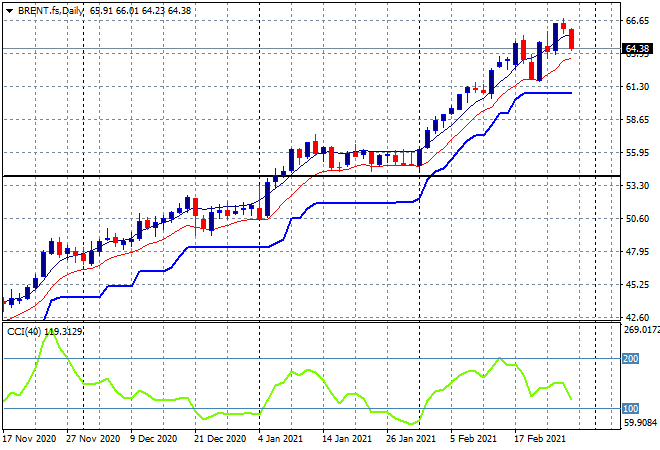
Gold had a major breakdown, clearly evident by anyone who can use a ruler and pull up a daily chart, with a big selloff on the much stronger USD, falling straight through to a new nine month low at $1735USD per ounce. Momentum is considerably oversold and there is the potential for a violent upswing here on short covering/profit taking but step back and the longer term chart is illustrative of where this can go alongside the bond shock:
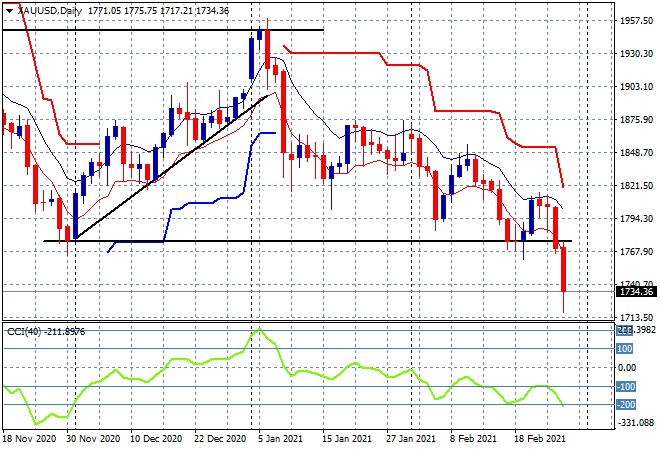
Glossary of Acronyms and Technical Analysis Terms:
ATR: Average True Range – measures the degree of price volatility averaged over a time period
ATR Support/Resistance: a ratcheting mechanism that follows price below/above a trend, that if breached shows above average volatility
CCI: Commodity Channel Index: a momentum reading that calculates current price away from the statistical mean or “typical” price to indicate overbought (far above the mean) or oversold (far below the mean)
Low/High Moving Average: rolling mean of prices in this case, the low and high for the day/hour which creates a band around the actual price movement
FOMC: Federal Open Market Committee, monthly meeting of Federal Reserve regarding monetary policy (setting interest rates)
DOE: US Department of Energy
Uncle Point: or stop loss point, a level at which you’ve clearly been wrong on your position, so cry uncle and get out!